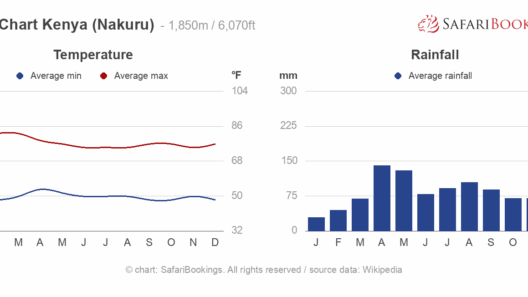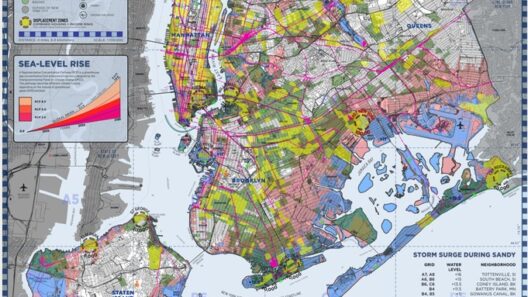Climate change represents one of the most daunting challenges of our era, but it is also a canvas for innovation and resilience. Here, we explore ten actionable solutions to combat climate change, showcasing what is currently being employed to foster a sustainable future.
1. Renewable Energy Adoption
The shift from fossil fuels to renewable energy sources—such as solar, wind, hydroelectric, and geothermal—is one of the most effective ways to mitigate greenhouse gas emissions. Countries worldwide have significantly increased investments in solar and wind infrastructure. For instance, in many regions, the cost of solar power has plummeted, making it a financially viable alternative for both residential and commercial users. This transition not only reduces carbon footprints but also generates jobs in new energy sectors.
2. Energy Efficiency Initiatives
Energy efficiency measures are vital for curbing resource consumption. Businesses and households are increasingly implementing energy-saving devices and practices, from LED lighting to high-efficiency appliances. Governments are enforcing stricter building codes and standards that mandate energy efficiency in new constructions. By improving insulation and utilizing smart technology, energy consumption can be reduced significantly, leading to lower emissions and reduced energy bills.
3. Carbon Pricing Mechanisms
Integrating carbon pricing into economic policies is proving effective at reducing emissions. By taxing carbon emissions, this approach incentivizes companies to innovate in order to lower their tax burden. Cap-and-trade programs, which allow businesses to buy and sell emission allowances, have also been successful. In regions where these policies have been enacted, significant reductions in carbon emissions can be observed, showcasing their effectiveness in driving down pollution levels.
4. Reforestation and Afforestation
Forests are crucial carbon sinks. Reforestation (restoring forested areas) and afforestation (planting in areas previously non-forested) combat climate change by absorbing CO2 from the atmosphere. Initiatives like the “Billion Tree Campaign” have seen millions of trees planted globally, contributing to biodiversity, stabilizing the soil, and enriching ecosystems. These projects not only help in combating climate change but also offer other societal benefits such as improved air quality and local livelihoods.
5. Sustainable Agriculture Practices
Modern agriculture is a significant contributor to greenhouse gas emissions. However, innovative practices are emerging to create a more sustainable food system. Techniques such as agroforestry, crop rotation, and permaculture not only enhance soil health but also reduce dependence on chemical fertilizers and pesticides. Additionally, regenerative agriculture focuses on restoring the health of agricultural ecosystems, increasing resilience to climate effects and enhancing carbon sequestration.
6. Circular Economy Models
The linear economy—take, make, dispose—is rapidly becoming obsolete. Embracing a circular economy model that emphasizes recycling, reusing, and repurposing materials is gaining traction. Businesses are designing products for longer life cycles, using sustainable materials, and focusing on lifecycle assessments. This shift reduces waste and lowers emissions by minimizing the need for new resources. The innovative concept of product-as-a-service exemplifies this approach, offering products as rental items rather than ownership.
7. Electrification of Transportation
Transitioning from traditional combustion engine vehicles to electric vehicles (EVs) is essential in reducing carbon emissions from transportation, which constitutes a sizable share of global CO2 emissions. Efforts are underway to increase the availability of EV charging infrastructure and make electric vehicles more accessible. Additionally, public transit systems are integrating electric buses, which further reduce urban pollution levels and are instrumental for cities aiming for sustainability.
8. Climate-Resilient Infrastructure
Building and retrofitting infrastructure to withstand climate impacts is critical. Engineers and urban planners are emphasizing resilient construction methods that consider future climate projections. For instance, stormwater management systems designed for heavy rainfall events, and elevated structures in flood-prone areas, reflect forward-thinking solutions that not only mitigate damage but also reduce long-term adaptation costs.
9. Community-Led Environmental Initiatives
Grassroots movements are powerful agents of change. Local communities across the globe are spearheading initiatives ranging from community gardens to local recycling programs. These grassroots efforts not only empower citizens but also foster community resilience. By engaging local stakeholders and creating widely-supported environmental projects, communities can address their unique challenges while contributing to broader climate goals.
10. Climate Education and Advocacy
Raising awareness about climate change and its impacts is essential for fostering a collective response. Educational programs at all levels—schools, universities, and community organizations—are driving crucial dialogues about sustainability, climate justice, and individual responsibility. Advocacy groups play a pivotal role in prompting policy changes and pushing for action at governmental levels. Effective communication and storytelling about climate issues can mobilize public support for sustainable practices.
In conclusion, these ten solutions illustrate the multifaceted approach needed to address climate change. Each action, whether initiated by individuals, communities, businesses, or governments, contributes to a larger movement towards sustainability. The implementation of these initiatives not only serves to combat climate change but can create opportunities for economic growth, enhance societal well-being, and foster a legacy of environmental stewardship for future generations.








